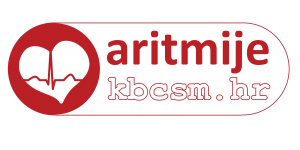About us.
Dear patients, dear guests,
Welcome to the website of the Centre for Arrhythmia and Cardiac Pacing at the Sisters of Mercy University Hospital Centre in Zagreb.
The Sisters of Mercy University Hospital Centre (KBCSM) was founded in 1846 and is one of the oldest and largest healthcare institutions in Republic of Croatia. Within the Department of Internal Medicine in 1963, a Department of Cardiology was established with an inpatient and outpatient-clinic work. Today, the Department of Cardiovascular Medicine, by its diagnostic and therapeutic methods, is one of the highly specialized in the Republic of Croatia and has been the Reference Centre for Arrhythmias of Ministry of Health since 2008.
Sisters of Mercy’s Centre for Arrhythmia and Cardiac Pacing physicians have extensive experience and expertise in diagnosing and treating heart rhythm disorders. The branch of cardiology by which KBCSM is recognized throughout the Republic of Croatia is electrophysiology.
Electrophysiology in pediatric patients
More than 50% of our patients come from outside Zagreb County. For the most part, during electrophysiology studies various forms of tachycardia can be diagnosed and mostly resolved. The most common forms of tachycardias are: atrial fibrillation (up to 5% of the population under 60 and up to 10% over 70), followed by re-entrant tachycardias (about 1% of the population under 40). Our patients are young, working people with an average age of 30 years. These arrhythmias are rarely life-threatening, but significantly reduce the quality of life making young patients unfit for work, requiring years of antiarrhythmic drug therapy which is rather expensive and often ineffective, with numerous and potentially dangerous side effects. Radiofrequency ablation is the first choice treatment for such rhythm disorders in developed countries, has a high success rate (> 90%) and a small number of complications (<1%).

